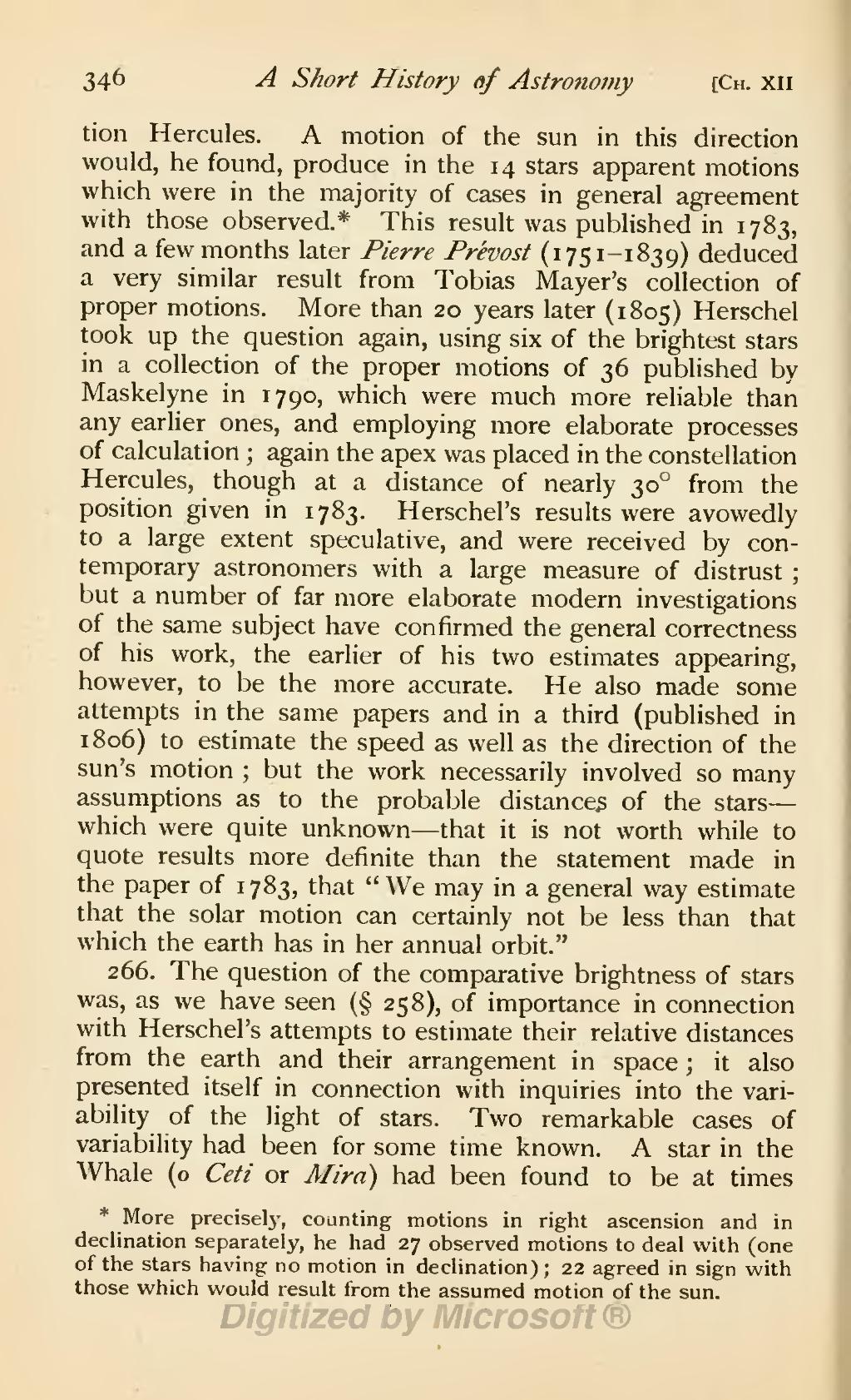tion Hercules. A motion of the sun in this direction would, he found, produce in the 14 stars apparent motions which were in the majority of cases in general agreement with those observed.[1] This result was published in 1783, and a few months later Pierre Prévost (1751-1839) deduced a very similar result from Tobias Mayer's collection of proper motions. More than 20 years later (1805) Herschel took up the question again, using six of the brightest stars in a collection of the proper motions of 36 published by Maskelyne in 1790, which were much more reliable than any earlier ones, and employing more elaborate processes of calculation; again the apex was placed in the constellation Hercules, though at a distance of nearly 30° from the position given in 1783. Herschel's results were avowedly to a large extent speculative, and were received by contemporary astronomers with a large measure of distrust; but a number of far more elaborate modern investigations of the same subject have confirmed the general correctness of his work, the earlier of his two estimates appearing, however, to be the more accurate. He also made some attempts in the same papers and in a third (published in 1806) to estimate the speed as well as the direction of the sun's motion; but the work necessarily involved so many assumptions as to the probable distances of the stars—which were quite unknown—that it is not worth while to quote results more definite than the statement made in the paper of 1783, that "We may in a general way estimate that the solar motion can certainly not be less than that which the earth has in her annual orbit."
266. The question of the comparative brightness of stars was, as we have seen (§ 258), of importance in connection with Herschel's attempts to estimate their relative distances from the earth and their arrangement in space; it also presented itself in connection with inquiries into the variability of the light of stars. Two remarkable cases of variability had been for some time known. A star in the Whale (ο Ceti or Mira) had been found to be at times
- ↑ More precisely counting motions in right ascension and in declination separately, he had 27 observed motions to deal with (one of the stars having no motion in declination); 22 agreed in sign with those which would result from the assumed motion of the sun.
